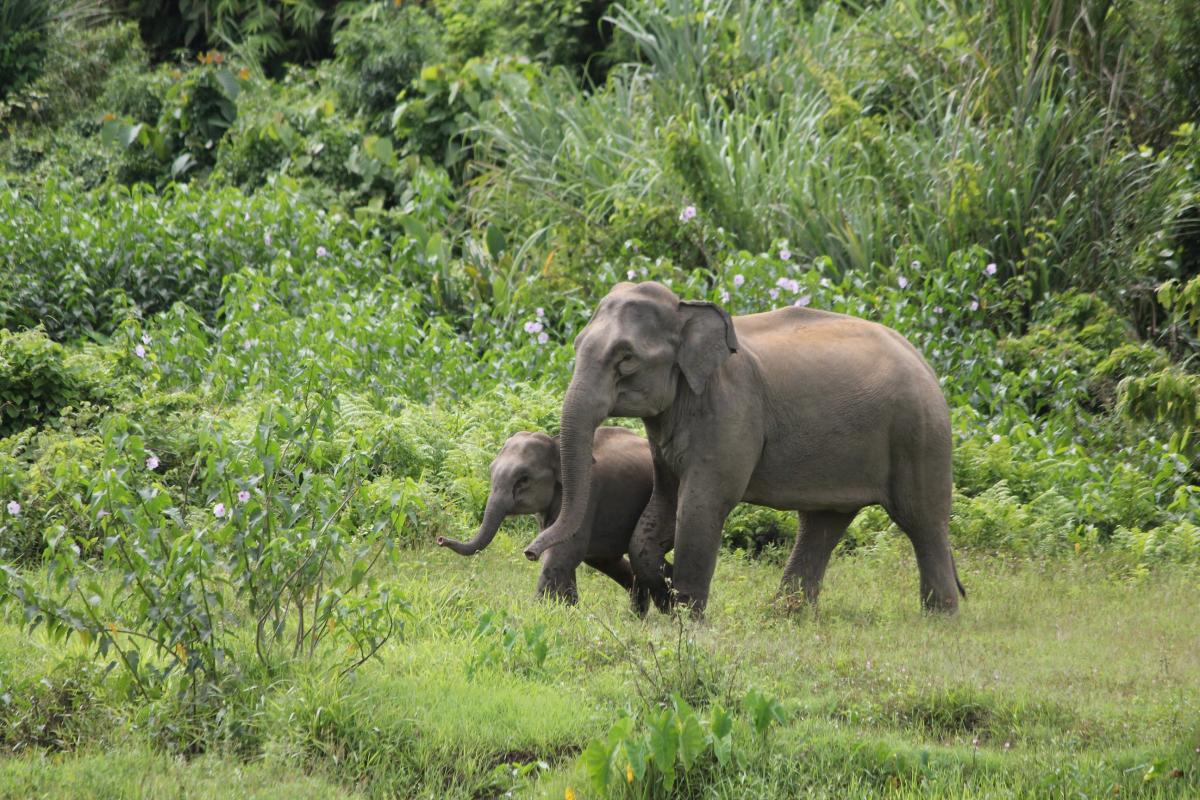Blog: Bangladesh has 268 wild elephants. What does it mean to us?
On this year’s International Day of Forests (21 March), the Government of Bangladesh has unveiled two new publications on Asian Elephants in the country. These books reveal the latest estimates of Bangladesh’s elephants along with their distribution, routes, and corridors. Haseeb Md. Irfanullah of IUCN Bangladesh explains what this new knowledge means to us.

Calf with its mother at Bagkhali Reserved Forest, Bangladesh. © IUCN / Mohar Ali
Photo: © IUCN / Mohar Ali
IUCN has recently investigated the total number of resident wild elephants in Bangladesh and it gives an official estimate of 268 elephants, all residing in south-eastern forest areas of the country.
The previous elephant count for Bangladesh was also conducted by IUCN Bangladesh back in 2001−2003 (IUCN Bangladesh, 2004). The new numbers fill in our knowledge gap of 12 years. The question is 'Has the number of elephants increased over the last decade or not?'. In 2004, IUCN estimated 178 resident elephants in Bangladesh; so the immediate answer to this question is "Yes!".
The latest survey (IUCN Bangladesh, 2016) has also estimated the number of migratory or non-resident elephants ranging from 79 to 107, with a mean of 93, roaming in four forest divisions. The total possible wild elephant range has been calculated 1,518 square kilometres, which is roughly one percent of the country. It means, on average 0.24 elephant lives in each square kilometre of elephant range.
Bangladesh should be proud of the recent 3-year-long (2013−2016) survey completed by its biologists. This is probably one of the most thorough attempts to assess national Asian Elephant status, conducted under a programme by the Bangladesh Forest Department and supported by The World Bank.
This initiative has also mapped out the routes elephants follow around the year and managed to mark 12 crucial small passages, known as elephant corridors, which they use to travel between forests. The study has also pointed out 57 elephant crossing-points on the international borders with India and Myanmar.
Bangladesh, however, should not be too complacent over the new apparently higher elephant numbers because of a few reasons. The Asian Elephant still remains on the verge of extinction − 'Critically Endangered' in Bangladesh and 'Endangered' globally, as per The IUCN Red List of Threatened Species™. The survey of 2013−2016 also shows us how human encroachments on elephant habitats are blocking off elephant corridors and causing human-elephant conflicts.
From a methodological point of view, the 2001−2003 survey was less intensive and extensive compared with that of 2013−2016, due to time, capacity, and financial constraints. Elephant calves were also not counted back then, which constitute 11 percent of the latest population estimates.
So it would not be fair to say the elephant population has significantly increased in Bangladesh. Instead, the latest elephant figures should be considered as an occasion to rejuvenate our efforts to conserve these magnificent animals.
A good number of detailed action points have been outlined in the Bangladesh Elephant Conservation Action Plan 2016−2025. Here I would focus on two urgent actions. We need to undertake large scale restoration of degraded forest lands. And we can start with elephant ranges. We need to focus on reforesting hills and connecting smaller forest patches with native tree species. This forest rejuvenation will create a habitat for elephants and give us multiple benefits at landscape level through biodiversity conservation, soil conservation, and watershed management.
We also urgently need to focus on transboundary cooperation for migratory elephant management. Without that the human-elephant conflicts will increase day by day. Reports on human deaths from elephant attacks certainly undermine all good biodiversity conservation work and increase the gap among conservationists, policymakers, wildlife managers, and local people. Transboundary cooperation between the neighbouring countries is the only permanent solution to such conflict, especially in the Mymensingh Forest Division harbouring 55 percent of migratory elephants.
The newly acquired knowledge on Asian Elephants gives Bangladesh an excellent opportunity to take species conservation forward by implementing long-term conservation action plans, managing landscapes, and harnessing regional cooperation.
This blog post was contributed by Haseeb Md. Irfanullah, Programme Coordinator for IUCN Bangladesh. Haseeb tweets as @hmirfanullah



